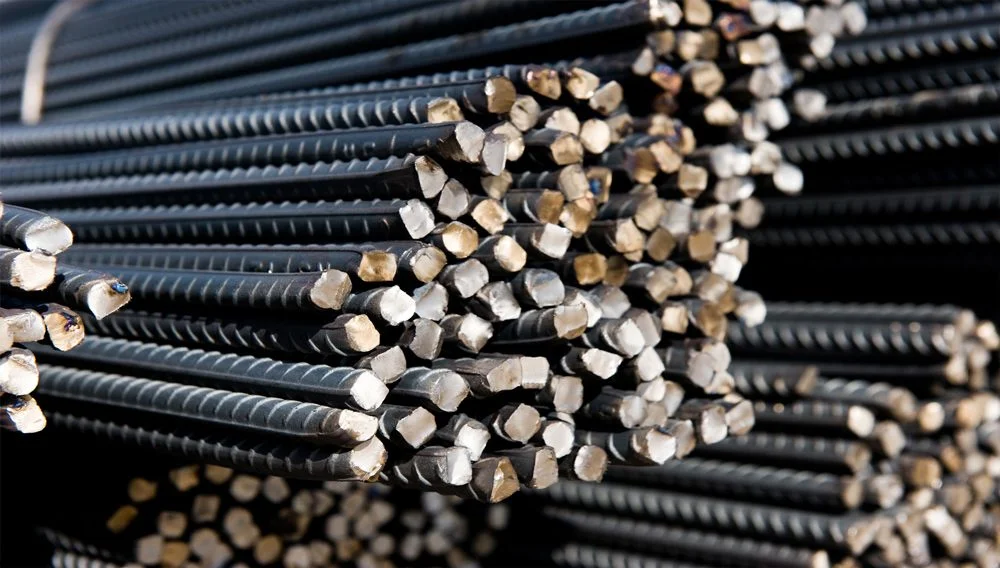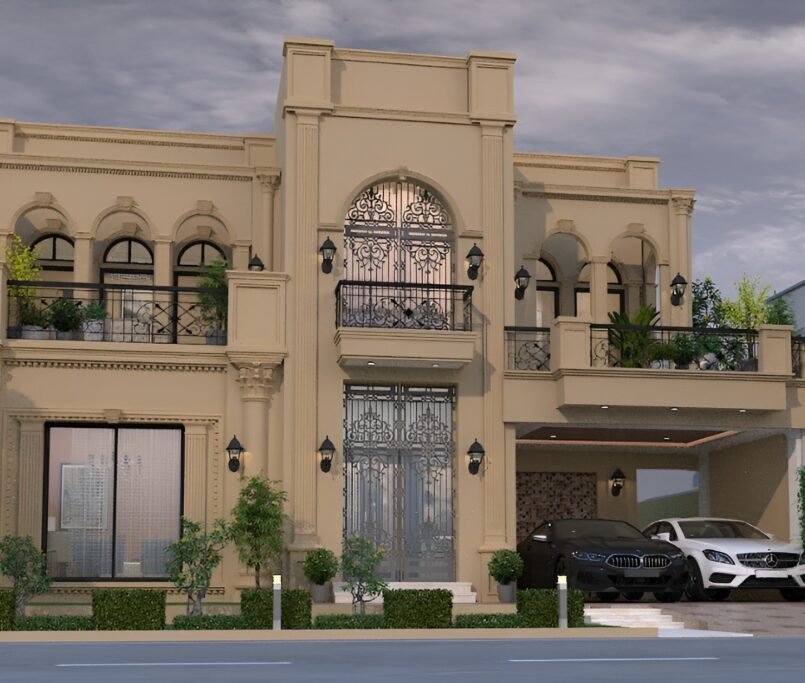Difference Between the 40 and 60 Grade Steel Bar?
Steel bars are the backbone of modern construction, quietly holding up everything from towering skyscrapers to your neighbor’s cozy house. These reinforcement bars, or rebars, are what make concrete structures strong enough to withstand earthquakes, heavy loads, and the test of time. Among the most popular choices are grade 40 and grade 60 steel bars—both champs in their own right, meeting ASTM A615 standards but offering different strengths and perks.
Figuring out the difference between grade 40 and grade 60 steel bars isn’t just for engineers or contractors—it’s a game-changer for anyone planning a build. Choosing the right grade can save you cash, keep your project safe, and make construction a breeze. In this guide, we’ll dive into their properties, benefits, and best uses in everyday language, so you can pick the perfect steel for your needs.
Contact Glorious Builders on WhatsApp for construction, renovation, or grey structure services.
Click to Chat with Our Experts
What Are Steel Bars and Why Are They Used?
What Exactly Are Steel Bars?
Steel bars, or rebars, are tough metal rods that team up with concrete to create a powerhouse material. Concrete’s great at handling compression (think squashing forces), but it’s weak against tension (pulling forces). That’s where steel bars come in—they take on the tension, making reinforced concrete ready to tackle storms, traffic, or whatever else life throws at it.

Plain vs. Deformed Steel Bars
Steel bars come in two main types:
Plain Steel Bars: Smooth and simple, these are handy for small projects or temporary setups. But they don’t grip concrete as tightly.
Deformed Steel Bars: With ridges or bumps, these bars lock into concrete like they mean it, cutting down on slippage and boosting strength. Both grade 40 and grade 60 are deformed bars, making them top picks for serious builds.
Why Steel Makes Concrete Better
Think of concrete and steel as best buddies. Concrete resists being crushed, while steel handles being stretched. Together, they stop cracks in their tracks and keep structures like buildings, bridges, and roads standing strong for years. Whether you’re using grade 40 or grade 60, these bars are all about toughness and safety.

What Is Steel Grading and Why Does It Matter?
Steel grading is like a cheat sheet—it tells you how strong, flexible, and dependable a steel bar is. This system helps builders choose the right steel for the job, ensuring everything from homes to highways is safe and solid. In construction, grade 40 and grade 60 are the big names, and their differences boil down to things like yield strength and flexibility.
Breaking Down the Technical Stuff
Yield Strength:
Grade 40 steel kicks in at 40,000 psi (280 MPa)—the point where it starts bending permanently under stress.
Grade 60 steel steps it up with 60,000 psi (415 MPa), so it can handle more force before deforming. That’s why it’s a go-to for heavy-duty projects.
Tensile Strength:
Grade 40 hits around 70,000 psi—strong, but not unbeatable.
Grade 60 goes beyond 90,000 psi, making it less likely to break under pressure.
Flexibility:
Grade 40 bends easily, great for on-the-fly adjustments at the site.
Grade 60 is stiffer and harder to shape, but that toughness shines in big builds.
ASTM A615: The Gold Standard
Both grades follow ASTM A615 rules, which ensure steel bars are high-quality and ready for construction. This standard means you’re getting reliable materials that won’t let you down. Knowing these details helps you match the steel to your project—whether you need strength, flexibility, or a budget-friendly option.
Contact Glorious Builders on WhatsApp for construction, renovation, or grey structure services.
Click to Chat with Our Experts

Key Differences Between Grade 40 and Grade 60 Steel
The main difference between the Steel Deformed bar grade 60 and 40 or threaded steel bar is that the latter is much stronger and most commonly used in constructional purposes. Then again, the 40 evaluation has a yield of 280 MPa or 40 kpsi. 40 evaluation steel has a yield of 280 MPa or 40 Ksi. 60 is a higher evaluation and is the generally utilized evaluation in strengthened cement. Evaluation 40 methods steel having yield strength of 40Ksi and grade 60 methods steel having yield strength of 60 Ksi. So grade 60 is more grounded than grade 40. The difference is yield strength 40kpsi versus 60kpsi. On the practical side, in design, you can use a smaller size, or fewer 60 grade bar to achieve the same effect as 40 grade bar. On site, 60 are harder to bend and cut than 40. We will typically use a power bender/cutter for anything larger than 3/4″ grade 60 bar. Apart from producing the finest cold twisted steel bars in the market, Razaque Steels pioneered the use of hot rolled deformed bars grade 40 & grade 60 (conforming to ASTM A 615) for large infrastructure projects. As deformed bar grade 40 are rods of steels provided with lugs, ribs or deformation on the surface of bar, these bars minimize slippage in concrete and increases the bond between the two materials. Deformed bars have more tensile stresses than that of mild steel plain bars. These bars can be used without end hooks. The deformation should be spaced along the bar at substantially uniform distances. To limit cracks that may develop in reinforced concrete around mild steel bars due to stretching of bars and some lose of bond under load it is common to use deformed bars that have projecting ribs or are twisted to improve the bond with concrete. These bars are produced in sections from 6 mm to 50 mm dia.
Practical Applications of Grade 40 and Grade 60 Steel Bars
Choosing between grade 40 and grade 60 steel comes down to what your project needs—think size, budget, and how much weight it’ll carry. Both grades reinforce concrete, but they shine in different scenarios.
Contact Glorious Builders on WhatsApp for construction, renovation, or grey structure services.
Click to Chat with Our Experts
When to Use Grade 40 Steel
With its 40,000 psi yield strength, grade 40 steel is perfect for smaller or medium-sized builds that don’t need to bear massive loads. Think:
- Cozy homes, townhouses, or low-rise apartments.
- Small shops or single-story offices.
- Extra reinforcements like non-load-bearing walls or slabs.
- DIY projects where you want steel that’s easy to cut and bend by hand.
When to Use Grade 60 Steel
Grade 60 steel, with its beefy 60,000 psi yield strength, is built for the big leagues—projects that demand top-notch strength and durability. It’s ideal for:
- Skyscrapers and high-rise buildings.
- Bridges and overpasses handling heavy traffic.
- Dams or water tanks facing constant pressure.
- Industrial setups needing long-lasting support.
Real-World Examples
Grade 40 steel often shows up in affordable housing projects, especially in growing areas where keeping costs low is key. Meanwhile, grade 60 steel powers iconic structures like the Burj Khalifa or the Golden Gate Bridge, where strength and longevity are non-negotiable. Picking the right grade means balancing performance with practicality.
Pros and Cons of Using Grade 40 vs. Grade 60
Why Grade 40 Steel Rocks
- Affordable: Cheaper than grade 60, perfect for tight budgets.

- Easy to Work With: Bends and cuts without fancy tools.
- Great for Everyday Builds: Handles smaller projects like a champ.
Where Grade 40 Falls Short
- Not as Strong: Can’t handle the heavy stuff like high-rises.
- Uses More Steel: You might need extra bars to get the job done.
Why Grade 60 Steel Shines
- Super Strong: Takes on bigger loads with fewer bars.
- Big Project Ready: A must for skyscrapers and bridges.
- Built to Last: Stays solid for the long haul.
Grade 60’s Downsides
- Pricey: Costs more upfront.
- Tough to Shape: Needs power tools for bending and cutting.
Quick Takeaway
Grade 40 is your budget-friendly, flexible friend for smaller jobs, while grade 60 is the heavy-duty champ for major builds. It’s all about what your project demands.
Expert Recommendations: Which One Should You Choose?
Picking between grade 40 and grade 60 steel isn’t a one-size-fits-all deal—it depends on your project’s size, budget, and needs. Here’s what the pros say.
What Engineers Think
Experts lean toward grade 60 for anything big or high-stakes—like bridges or high-rises—thanks to its strength and efficiency. It uses less material to do more, which can save time and hassle. But for smaller builds like homes or low-rise offices, grade 40 gets the nod for its affordability and ease of use. Workability and cost often tip the scales here.
Contact Glorious Builders on WhatsApp for construction, renovation, or grey structure services.
Click to Chat with Our Experts
What to Think About
- Project Size: Go grade 60 for massive builds; stick with grade 40 for smaller ones.
- Budget: Tight on cash? Grade 40’s your pick.
- Strength Needs: Need serious staying power? Grade 60’s got it.
- Local Rules: Some areas demand grade 60 for safety in shaky or windy spots.
Tips for Builders
- Buy from trusted suppliers who meet ASTM A615 standards.
- Check mill test reports to confirm quality.
- Stock up in bulk for big jobs to cut costs.
- Store steel properly to keep it in top shape.
Weighing these factors helps you land on the right steel for a safe, efficient build.
Contact Glorious Builders on WhatsApp for construction, renovation, or grey structure services.
Click to Chat with Our Experts
Conclusion
Steel bars are the secret sauce behind strong, lasting concrete structures, and choosing between grade 40 and grade 60 can make or break your project. Grade 40 is the affordable, easy-to-use option for smaller builds, while grade 60 brings the muscle for big, demanding jobs like skyscrapers and bridges. Each has its strengths, and the right pick depends on your project’s size, budget, and local rules.
By understanding the difference between grade 40 and grade 60 steel bars—yield strength, flexibility, and all—you can build smarter and safer. Always go for high-quality steel that meets industry standards, and don’t hesitate to chat with a pro to get it right. Here’s to stronger, more reliable structures!
Frequently Asked Questions
What’s the Main Difference Between the 40 and 60 Grade Steel Bar?
The big difference between the 40 and 60 grade steel bar is strength. Grade 40 has a yield strength of 40,000 psi, while grade 60 jumps to 60,000 psi. That means grade 60 can handle more stress before bending, making it stronger for bigger projects.
Which Is Stronger: Grade 40 or Grade 60 Steel Bars?
Grade 60 steel bars are stronger than grade 40. With a yield strength of 60,000 psi compared to 40,000 psi, grade 60 wins hands down for heavy-duty builds needing extra toughness.
Can I Use Grade 40 Steel Instead of Grade 60?
It depends on your project. Grade 40 works fine for smaller builds like homes, but for high-rises or bridges, grade 60’s higher strength is a must. Check the difference between the 40 and 60 grade steel bar to match your needs.
Why Is Grade 60 Steel Harder to Bend Than Grade 40?
Grade 60 steel is less flexible because of its higher strength—60,000 psi versus 40,000 psi for grade 40. That stiffness is part of the difference between the 40 and 60 grade steel bar, making grade 60 tougher to shape without power tools.
What Projects Are Best for Grade 40 Steel Bars?
Grade 40 steel bars shine in small-to-medium projects like houses, low-rise offices, or DIY builds. They’re easier to work with and cheaper, which is a key difference between the 40 and 60 grade steel bar for simpler jobs.
When Should I Choose Grade 60 Steel Bars?
Go for grade 60 steel bars when you’re building big—think skyscrapers, bridges, or dams. Their superior strength (60,000 psi) makes them ideal for heavy loads, a major difference between the 40 and 60 grade steel bar.
How Does the Cost Differ Between Grade 40 and Grade 60 Steel Bars?
Grade 40 steel bars are usually cheaper than grade 60 because they’re less strong and easier to produce. The difference between the 40 and 60 grade steel bar in price can sway your choice if budget’s a concern.
Are Grade 40 and Grade 60 Steel Bars Both Safe for Construction?
Yes, both meet ASTM A615 standards and are safe when used right. The difference between the 40 and 60 grade steel bar is about strength and use—grade 40 for lighter builds, grade 60 for heavy ones.
Do I Need Special Tools for Grade 60 Steel Bars?
You might! Grade 60 steel is harder to cut and bend than grade 40 due to its higher strength. That’s a practical difference between the 40 and 60 grade steel bar—power benders or cutters often come in handy for grade 60.
How Do I Decide Between Grade 40 and Grade 60 Steel Bars?
Look at your project’s size, budget, and strength needs. Grade 40 is great for small, affordable builds; grade 60 is better for big, sturdy ones. The difference between the 40 and 60 grade steel bar boils down to balancing cost and performance.
Glorious Builders
DHA Construction Company in Lahore Get Direction
Bahria Town Construction Company in Lahore Get Direction





